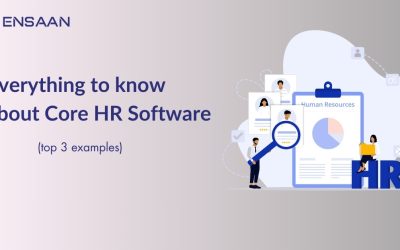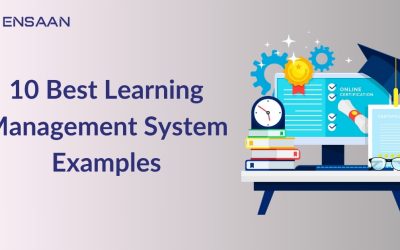Enhancing individual and team performance and coordinating company goals with employee aspirations are made possible through performance management.
There are various types of Performance Management Systems (PMS) that address distinct organizational needs, so it’s not a one-size-fits-all strategy.
We’ll go over the many kinds of performance management systems in this guide, along with examples of how Cornerstone assists businesses with their implementation.
Explore the top Performance Management Software to Scale your Business !

What is a Performance Management System?
A structured method known as a Performance Management System (PMS) assists companies in assessing worker performance, establishing objectives, providing feedback, and generating growth prospects.
It is an ongoing process designed to boost productivity, encourage staff development, and align individual contributions with company objectives.
Various performance management system types are used by businesses depending on their objectives, size, and type of enterprise.
Types of Performance Management Systems
The methods used to assess performance, provide feedback, and link the system with other corporate initiatives range between the various kinds of performance management systems.
The main categories of performance management systems are listed below:
-
- Conventional Annual Performance Evaluation
-
- Ongoing Performance Monitoring
-
- 360-Grade Rating System
-
- Objectives and Key Results (OKRs)
-
- Performance Management with an Eye on Development
1. Customary Annual Performance Evaluation:
The most traditional kind of performance management system is the Traditional Annual Performance Appraisal.
Under this approach, an official performance review meeting is frequently used to evaluate an employee’s work once a year.
Managers assess staff members according to pre-established standards, such as their accomplishments, level of proficiency, and role in achieving company objectives.
For instance:
-
- Employee performance is evaluated by managers using customer satisfaction surveys and sales targets in a retail company’s yearly assessment system.
How This is Supported by Cornerstone:
-
- With Cornerstone’s configurable performance appraisal templates, businesses may conduct yearly staff evaluations according to predetermined standards.
Workers are able to monitor their own performance, and supervisors are able to conduct official annual performance reviews.
The platform provides a fair assessment of an employee’s performance by allowing for peer, manager, and self-evaluation.
- With Cornerstone’s configurable performance appraisal templates, businesses may conduct yearly staff evaluations according to predetermined standards.
2. Ongoing Performance Monitoring:
Continuous Performance Management, as opposed to the traditional approach, places more emphasis on continuing, frequent feedback than a single, annual evaluation.
This method involves setting goals regularly, giving immediate feedback, and having yearly meetings between managers and employees.
For instance:
-
- Continuous performance management is a tool that software companies may use to make sure that staff members are always informed about their objectives and get immediate feedback on their teamwork and coding efficiency.
How This is Supported by Cornerstone:
-
- Managers can easily give rapid feedback via desktop or mobile applications with Cornerstone’s continuous feedback solutions.
Goals can be defined and modified by managers and staff members on a regular basis to guarantee that workers stay in line with changing company priorities.
Frequent check-ins and instant feedback promote a culture of continuous improvement and stop performance problems from getting worse.
- Managers can easily give rapid feedback via desktop or mobile applications with Cornerstone’s continuous feedback solutions.
3. A 360-Degree System of Feedback:
A more all-encompassing method is the 360-Degree Feedback System, which collects feedback from peers, managers, employees, and even clients.
This technique encourages well-rounded development by taking into account input from several angles, giving an employee’s performance an overall picture.
For instance:
-
- A consultancy firm that gathers feedback from clients, coworkers, and team members can use 360-degree feedback to assess a consultant’s communication, leadership, and teamwork abilities.
How This is Supported by Cornerstone:
-
- Employees can obtain assessments from various sources by using the 360-degree feedback capabilities that Cornerstone’s platform offers.
While employees can have a better understanding of how their work is seen by different stakeholders, managers can obtain consolidated feedback reports to acquire a comprehensive picture of performance.
This increases self-awareness and promotes teamwork in the workplace.
- Employees can obtain assessments from various sources by using the 360-degree feedback capabilities that Cornerstone’s platform offers.
4. Key Results and Objectives (OKRs):
Setting ambitious, quantifiable goals (objectives) and determining key outcomes that aid in tracking progress toward these goals are the main components of the Objectives and Key Results (OKRs) framework.
The alignment of team, corporate, and individual goals is guaranteed by this framework.
So, employees are encouraged to pursue stretch goals by using OKRs, which are usually recorded on a quarterly basis.
For instance:
-
- If the goal is to raise brand awareness, a marketing department might establish OKRs with the following important outcomes: a 20% increase in website traffic and a 30% increase in social media engagement.
How This is Supported by Cornerstone:
-
- Organizations may easily define and monitor OKRs at the individual, team, or corporate level with Cornerstone.
Workers can see how their goals fit into the larger business objectives, and managers can keep an eye on important outcomes to make sure things are moving forward.
To keep everyone informed, the platform’s goal-tracking capabilities offer visible progress reports and real-time updates.
- Organizations may easily define and monitor OKRs at the individual, team, or corporate level with Cornerstone.
5. Performance Management that is Development-Oriented:
Likewise, Employee development and Learning are the main goals of the Development-Oriented Performance Management System.
In addition to reviewing prior performance, the goal is to give staff members chances for both professional and personal growth.
Personalized learning plans, coaching, and mentoring programs are all part of this system.
For instance:
-
- This strategy could be used by a finance company to support staff members in obtaining new certifications or competencies relevant to their positions, providing opportunities for training and mentorship to cultivate long-term career development.
How This is Supported by Cornerstone:
-
- Organizations can design individualized learning and development strategies with Cornerstone’s integrated Learning Management System (LMS).
To improve their abilities, staff members have access to a library of courses, workshops, and certifications.
That is why, In order to make sure that development initiatives are in line with performance objectives, managers can also set up mentorship programs and monitor staff advancement in real-time.
- Organizations can design individualized learning and development strategies with Cornerstone’s integrated Learning Management System (LMS).
Cornerstone’s Performance Management Benefits
Basically, organizations that use Cornerstone as a performance management platform stand to gain the following advantages:
-
- Customization: Whether it’s yearly evaluations or ongoing feedback, Cornerstone enables companies to adapt performance management solutions to their own requirements.
-
- Integration: The platform allows for the smooth integration of learning and development with performance management, allowing staff members to improve their abilities while getting feedback.
-
- Data-Driven Insights: Managers can make well-informed decisions on promotions, pay increases, and growth opportunities by using Cornerstone’s comprehensive analytics and reporting tools, which offer them relevant insights into employee performance.
-
- Engagement: Cornerstone promotes a culture of openness, drive, and development through ongoing feedback and recognition elements.

Conclusion
Therefore, selecting an appropriate Performance Management System is essential for coordinating worker efforts with organizational objectives and cultivating a culture of high performance.
Well, Cornerstone offers performance management solutions with the flexibility and capabilities to suit your business objectives, whether you prefer a Continuous Performance Management model, 360-Degree Feedback approach, or Traditional Annual Appraisal.
Through the integration of growth opportunities, performance monitoring, and ongoing feedback, Cornerstone assists companies in creating a work environment where staff members may flourish and make a lasting contribution to the success of the company.

















